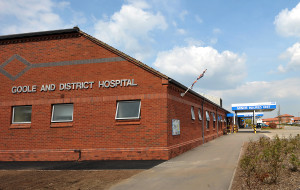Breast reduction
Breast reduction, also known as reduction mammoplasty, is a surgical operation to reduce the weight and volume of the breasts.
Looking for male breast reduction? Click here.
During the procedure, fat, glandular tissue and skin are removed from the breasts, which are then reshaped and the nipples repositioned. Breast size is determined by genes, hormones, body frame and weight. For the majority of women breast size is proportionate to their body, but for some, breast size is particularly large. Large breasts can cause physical symptoms such as discomfort, backache, neck pain, and skin irritations. Large breasts can also cause psychological distress. Common complaints from women with large breasts include not being able to wear fashionable clothes and finding it difficult to take part in active sports. Breast reduction surgery can help women who are unhappy with the shape, weight or droop of their breasts by making them smaller and more lifted. However, breast size alters with body weight, so even after surgery, your breasts may increase in size if you put on weight or become pregnant.
What happens during the operation
Breast reduction surgery is usually done under general anaesthetic. You will be asked to follow fasting instructions before your operation. Typically, you can not eat or drink for six hours before having the anaesthetic. Surgery takes between one-and-a-half and three hours. You are usually required to stay in hospital for one or two nights. The aim of surgery is to create a natural shape and retain as much function and sensation in the nipples as possible. The surgeon will use a pen to mark areas of the skin where the incisions (surgical cuts) will be made. With your permission, the surgeon may also photograph your breasts for confidential ‘before and after’ images for your records.
Most breast reduction surgery begins with the nipple, which is moved to its new position, usually while still attached to the blood supply. If you have extremely large breasts, the nipples may be removed and repositioned as a skin graft, and they will develop their own blood supply. Excess skin and breast tissue are then removed. The remaining breast tissue is then reshaped to create smaller and more elevated breasts.
Aftercare and recovery
When you wake up after having breast reduction surgery, your breasts will be bandaged and plastic tubes may be attached to your breasts to drain blood away. After one to two days, any tubes will be removed and you should be able to go home. You may experience some pain for a few days, which can be relieved with painkillers.
Once you have returned home, depending on your age and general fitness, you will need to rest for two to six weeks. The length of time you need to keep the dressings on will depend on how quickly your wounds heal. After one to two weeks, your stitches will either dissolve or be removed at an outpatient clinic.
After a few days you will be able to walk around and resume some of your normal activities but only do the easy ones to start with. Avoid any strenuous exercise for a week to ten days.
At your follow-up appointment your surgeon will advise you when you can resume your normal activities and return to work. You may need to take two to four weeks off, depending on what your work involves. When you go for your first aftercare visit, the light dressing will be removed and the wounds cleaned. It is important that these are kept clean so do not have a shower for the first few days following your surgery. Once you are able to do then try to avoid completely submerging your wounds. You can use moisturiser but don’t use on the surgical wounds.
You should avoid stretching, strenuous exercise and heaving lifting for up to six weeks after your operation. You also need to keep your breasts supported by wearing a well fitting, wireless sports bra. It is likely your breasts will be swollen and feel tender and lumpy after surgery. The final appearance of your breasts may not be obvious for several weeks.
Scars tend to be quite red for the first six weeks after surgery; they then change to a purple colour over the next three months before fading to white. Most scars heal well but occasionally patients are left with red and lumpy scars that do not improve in appearance.
Risks and complications
All surgical procedures carry risks so it’s important that as well as the benefits of cosmetic procedures you are also fully aware of any complications that may arise.
Complications can include excessive bleeding, haematoma (blood clot under the skin), infection and under or over sensitive nipples.
To enquire about our services or to make an appointment call us on (03033) 302956 or make an online enquiry
Who will perform this procedure?
Where can I have this procedure performed?

Goole and District Hospital
Goole hospital is where all of our cosmetic procedures are carried out, although you can choose to have your clinic consultations at Scunthorpe or Grimsby hospitals if this is more convenient.
How much does it cost?
| Inital Consultation Fee | From £150 |
| Breast Reduction | From £6231 |
Quality of care
From the moment we receive your request for a consultation through to the completion of your treatment we offer the highest standards of care.
Affordability
We offer a high quality service at competitive prices. As we work out of NHS hospitals we are able to offer procedures that are more affordable than our competitors
FAQ
From 'what's included in the price' to 'how to pay' see some of the questions asked by our patients and the answers.